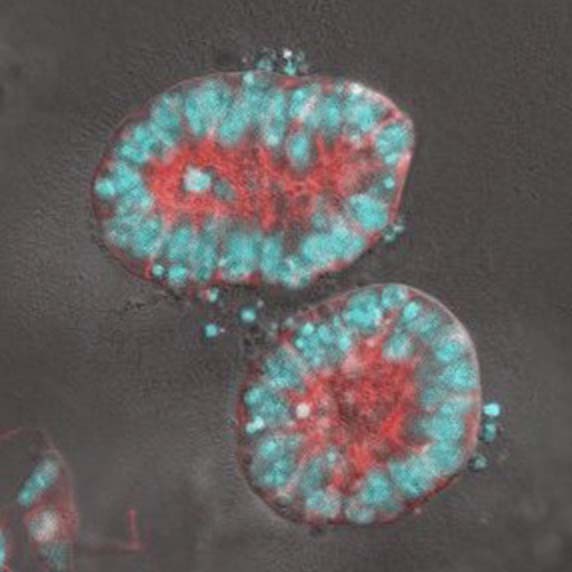

In the cultur, we let cells to create 3D tissues in a self-organizing manner and observe multi-cellular interactions during morphogenesis. We aim to understand the self-organizing multicellular dynamics from a viewpoints of the molecular biology, cell biology, and biomechanics, using gene modification and fluorescence imaging techniques.
We are developing new methods of mechanics-based simulations to analyze 3D multi-cellular dynamics such as embryogenesis and carcinogenesis. By combining this technology with biological experiments, we aim to reveal new aspects of the shaping of living organisms.
Using atomic force microscopy (AFM) and motorized manipulators, we apply mechanical and biochemical perturbations to the local regions of the three-dimensional tissues and observe their responses. These perturbations aim to understand the cross-scale interactions between molecules, cells, and tissues that are key for self-organization.
Based on the quantitative data and understandings obtained from experiments and simulations, we extract and formulate various elementary processes of multi-cellular dynamics. We aim to discover the principles common to a wide range of physiology and pathophysiology.




